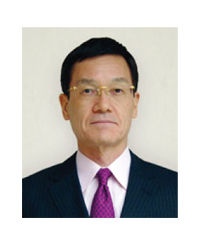Greeting from the Chief Officer
Toward reduction of large-scale natural disasters

Japan has been attacked almost every year by typhoons,local heavy rainfalls, earthquakes, tsunamis,etc. and suffered severe damage. Especially,on 11 March 2011,it was attacked by a huge earthquake (Magnitude: 9.0) whose epicenter was located off the Pacific coast of Tohoku Area,and subsequent huge tsunami. Around the Tohoku Area,the victims amounted to almost 20,000,and the loss of property was devastating and catastrophic. It was really an unprecedented tragic disaster;we have sincerely re-realized the rage of Nature. Moreover,the tsunami caused severe damages of Fukushima Daiichi nuclear power plants,which resulted in massive injection of radioactive material to the environment. Those large-scale natural disasters have huge impacts on the society and economic activities,and therefore,prompt and efficient measures are required immediately to reduce and prevent the disasters.
Because field experiments cannot be done,in order to evaluate influences of natural hazards which cause those large-scale natural disasters,and verify the measures for disaster prevention and reduction,the measures should be examined by large-scale simulations using supercomputers. We have carried out large-scale simulations on“Earth Simulator”,which used to be the fastest supercomputer in the world. In Field 3,“Advanced Prediction Researches for Natural Disaster Prevention and Reduction”,of SPIRE(Strategic Programs for Innovative Research),we will carry out simulations of those natural hazards by using the next-generation supercomputer,“K computer”,in collaboration with universities and research institutions in Japan,in order to contribute to the measures for actual disaster prevention and reduction,as well as to stimulate the basic research. Specifically,we will try to project the intensity and number of typhoons,hurricanes and cyclones globally under global warming condition,demonstrate the feasibility of numerical prediction of local heavy rainfalls,provide the bases for next-generation earthquake hazard maps,improve the accuracy of tsunami warning,and reduce the damage by natural hazards through natural disaster simulation for entire urban areas. In that process,we will pursue the most efficient synergistic effect of using two supercomputers,“K computer”and“Earth Simulator”We will also try to educate young scientists whom our society depend on in future.
Unfortunately,we cannot precisely predict when,where and how big in magnitude an earthquake and subsequent tsunami will occur even by using“K computer”. However,if we can carry out faster and more accurate simulations on natural hazards,including typhoons and local heavy rainfalls,we can prepare more effective and efficient measures,and design urban areas which are more resistant to the natural hazards.
Shiro Imawaki
( JAMSTEC )
